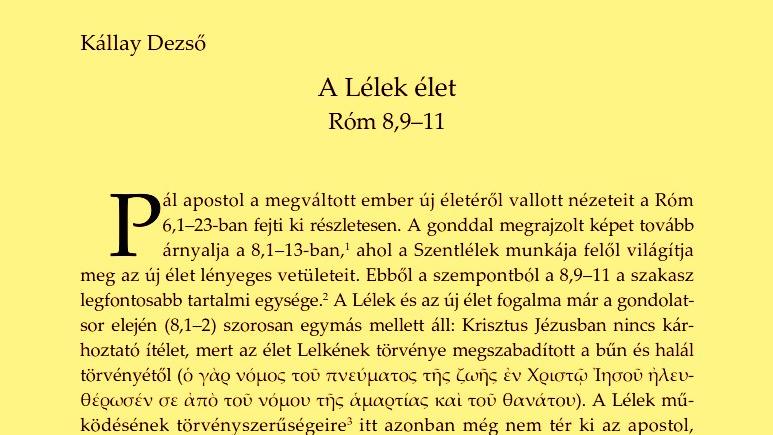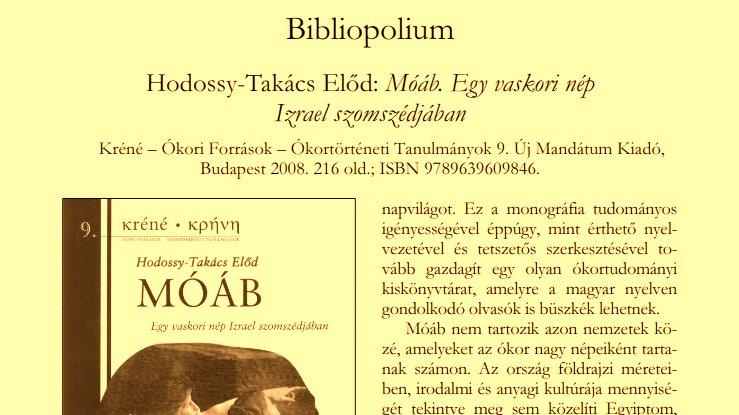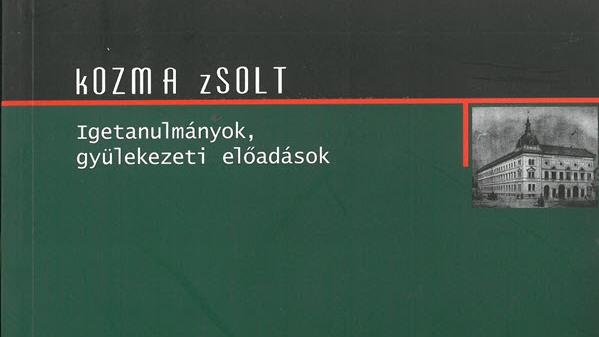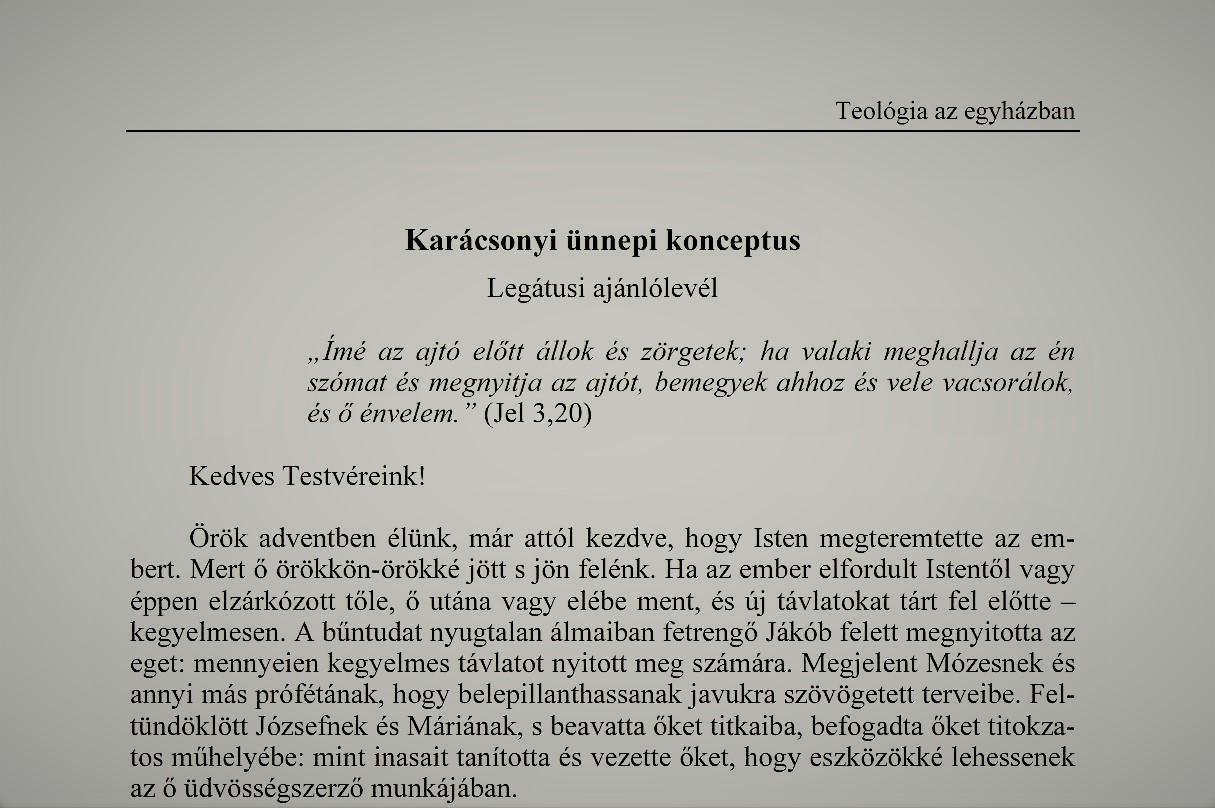Publikációk
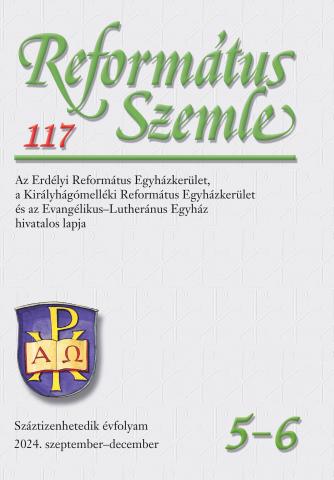
Bíró Beatrix › 2024 › Oldal: 445--491A 20. század második felétől a formatörténeti kutatás feltételezte az elhívástörténet műfajának létezését, miután egy adott sémát fedeztek fel a bibliai elhívástörténetekben. Az általam vizsgált perikópát (Ex 2,23–4,17) is egy ilyen elhívástörténetként tartják számon. Az Ex 2,23–4,17 azonban az elhívástörténet ismerős elemein túl számos egyéb részletet tartalmaz, amely kérdéseket vet fel a műfaj helyes azonosítását illetően. E kérdésekben vizsgálódásom alapjául Erhard Blumnak a Tóra kialakulására vonatkozó megállapításai szolgálnak, aki hagyománytörténeti modelljében két kompozíció létét…
Szaktanulmány › Ószövetség › szerkesztéstörténet, deuteronomista kompozíció, Mózes, elhívás, prófétai hivatás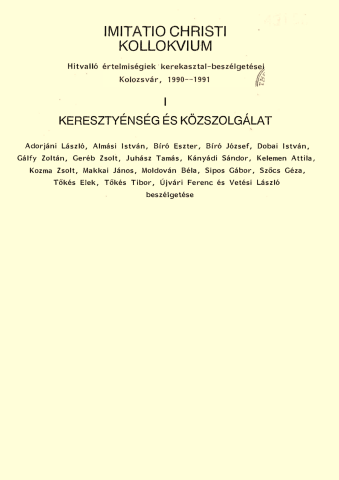
Sipos Gábor › 1991 › Oldal: 53--53Ha mi nem vagyunk alkalmasak az Ígéret Földjére, új, alkalmas nemzedék nevelésére még megfelelők lehetünk, ha olyan vitathatatlan iránymutatónk van, mely átvezet a szellemi rabszolgaság és az izmusok szünkretikus nihilizmusa között. Létezik-é ilyen iránymutató, ilyen értékrend ebben az általános válságban, hiszen a válságot éppen az értékek devalvációja jelenti? Igen, azok számára, akik hiszik, azok számára létezik ilyen örök értékrend, az, melyet a Krisztus útjának kalauza, a Szentírás ad. Akik hisszük azt, hogy Krisztus értékrendje alapján az emberiség megtalálhatja erkölcsi egyensúlyát…
Tanulmánykötet › Egyéb, Teológia (általános) › egyház és világ, egyház és nyilvánosság, egyház és társadalom
Név Nélkül › 2024 › Oldal: 435--438Közlemény › Egyéb, Spiritualitás › lelkészképzés, református lelkészképzés
Név Nélkül › 2024 › Oldal: 432--435Közlemény › Egyéb, Egyéb › lelkészképzés, református lelkészképzés
Név Nélkül › 2024 › Oldal: 430--432Közlemény › Egyéb, Egyéb › lelkészképzés, református lelkészképzés, felvételi
Balogh Csaba › 2024 › Oldal: 429--429Beszámoló › Egyéb, Egyéb › lelkészképzés, református lelkészképzés, Coetus Theologorum
Balogh Csaba › 2024 › Oldal: 427--428Beszámoló › Egyéb, Egyéb › lelkészképzés, református lelkészképzés, Coetus Theologorum
Bak Ágnes › 2024 › Oldal: 424--426Recenzió, kritika › Egyéb › folyóirat, sajtótörténet, Egyházi- és Iskolai Szemle
Vörös Éva › 2024 › Oldal: 410--423Recenzió, kritika › Egyéb, Irodalomtudomány / Nyelvtudomány › Visky András, szakrális nyelvezet, teológia és irodalom
Postma Ferenc › 2024 › Oldal: 393--409Az Észak-Hollandiai egyetemeken (Utrecht, Groningen, Franeker) tanuló legtehetségesebb magyar peregrinusok Martonfalvi Tóth György köré csoportosult köre latinul, görögül, sőt héberül is írt üdvözlő verseket (carmina gratulatoria). Ehhez a peregrinus körhöz tartozott Csedregi Péter is, aki Sárospatakon kezdte teológiai tanulmányait, s aki 1659-ben sikeresen védte meg a Disputatio theologica de miraculis című dolgozatát a Franekeri Egyetemen. Barátai, Martonfalvi György és Keresztúri Bálint ennek alkalmából tüntették ki két héber nyelvű verssel. Csedregi Disputatio theologica de miraculis…
Szaktanulmány › Egyháztörténet › peregrináció, holland-magyar kapcsolatok, Csedregi Péter, Nicolaus Arnoldus
Kató Szabolcs Ferencz, Kiss Dénes, Bálint Róbert Zoltán › 2024 › Oldal: 367--392Milyen feladatokat kell ellásson a 21. századi protestáns lelkipásztor és milyen kell legyen annak fényében egy időszerű teológiai képzés? E kérdések megválaszolására a Kolozsvári Protestáns Teológiai Intézet és a Valláskutató Intézet kutatói közös munkacsoportot alakított és a lelkészi szerepek feltérképezését tűzte ki célul. A kutatás első lépéseként szakértői interjúk készültek a három erdélyi protestáns egyház vezetőivel és fókuszcsoportos beszélgetések zajlottak különböző gyülekezeti hátterű lelkészekkel. Jelen tanulmány e beszégetések felismeréseit összegzi néhány sokatmondó…
Szaktanulmány › Egyéb, Szociológia › lelkészképzés, református lelkészképzés, egyház és társadalom, közösségépítés
Pecsuk Ottó › 2024 › Oldal: 360--366Az új ökumenikus bibliafordítás munkálatai 2017-ben kezdődtek, a vatikáni Egységbizottság és a United Bible Societies közötti irányelvek alapján. A fordításban katolikus és református szakértők vesznek részt, és a Magyar Katolikus Püspöki Konferencia is jóváhagyta a programot. A fordítást új megközelítés jellemzi, amely során a stiliszta által készített alapszöveget finomítják a biblikus szakemberek filológiai, egzegetikai és teológiai szempontból. Cél, hogy segítsük a teológiai előismeretekkel nem rendelkező olvasók megértését: rövidebb mondatokban fogalmazunk és a nagyobb…
Szaktanulmány › Újszövetség › bibliafordítás, magyar bibliafordítás, ökumenikus bibliafordítás, Magyar Bibliatársulat
Hubai Péter › 2024 › Oldal: 348--359Új kéziratok felbukkanása mindig felveti annak a kérdését, hogy tartalmazhatnak-e autentikus Jézus-mondásokat. Milyen kritériumok alapján tudjuk eldönteni, hogy a Tamás evangéliumban vannak-e ilyenek? E cikk egyfelől úgy érvel, hogy az ókorban mást tekintettek hitelesnek, mint mi ma, másfelől módszertanilag először a nem hiteles mondásokat igyekszik kiszűrni. A Tamás evangélium logionjainak fele feltehetően hiteles, ám ezek nagy része a szinoptikusokban megőrzött mondások párhuzama. Van azonban legalább két olyan logion, amely elképzelhetően autentikus, Jézus száján elhangzott mondás.
Szaktanulmány › Újszövetség › Tamás evangéliuma, szinoptikus hagyomány, történeti Jézus, Q-forrás
Debreczeni Ákos József › 2024 › Oldal: 333--347Ez a tanulmány az egyiptomi feltámadásképzetre összpontosít, amely Ízisz és Ozirisz istenek kultuszában alakult ki elsőként, s amely szerint az elhunytak egyesülhettek Ozirisszal és benne lelhettek végső nyugalmat; Ízisz beavatottjai fölszabadulhattak a sors kegyetlen hatalma alól, Szerápiszban pedig azt az emberközeli istenséget lehetett megtalálni, aki foglalkozik a halandó emberrel. A misztériumokhoz való csatlakozás viszonylag könnyű és bárki számára elérhető volt, s ezért is okozhatott zavart az első keresztyén gyülekezetekben. Ízisz és Ozirisz kultusza gyorsan terjedt a…
Szaktanulmány › Újszövetség, Egyéb, Ókortudomány › feltámadás, Ízisz, Osiris, Szerápisz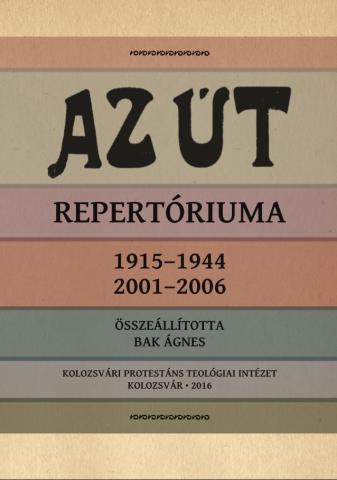
Bak Ágnes › 2016 › Oldal: 360A repertórium a Kolozsváron megjelenő, Az Út című teológiai folyóirat harminckét (huszonhat+hat) év alatt megjelent, teljes cikkanyagát tartalmazza, kivéve a 2001–2006-ban kiadott évfolyamok szerkesztői közleményeit és a Szerkesztői üzenetek című rovatot, amely Kiadóhivatali üzenetek (1925–1926), majd Szerkesztői és kiadóhivatali üzenetek (1927–1931) címen jelent meg, és amely 1936-ban cím nélkül közölt iratterjesztési felhívásokat, nyugtázásokat. A forrásmunka két főegységre tagolódik. Az első Az Út tartalommutatóját tartalmazza, először a 20…
Katalógus › Egyéb › repertórium, Az Út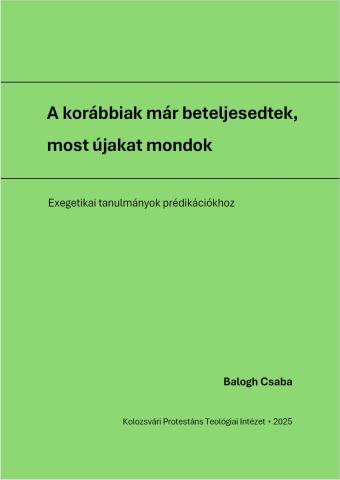
Balogh Csaba › 2025 › Oldal: 155A kötetben közzétett 10 exegetikai tanulmány mindegyike az Igazság és Élet című lelkipásztori szakfolyóiratban jelent meg 2008–2024 között. Tartalmukat tekintve a szövegek az említett folyóirat szerkezeti alapegységeit követik: exegetikai megértés, teológiai összefüggések feltárása, prédikációvázlat, példák és szemelvények, szempontok az istentisztelet alakításához, illetve bibliográfiai hivatkozások. A szövegek a folyóiratban eredetileg megjelent formájukban, a textusok kanonikus sorrendje szerint kerülnek itt közlésre.
Tanulmánykötet › Ószövetség, Újszövetség, Gyakorlati teológia › exegézis (szövegértelmezés), homiletika, homiletikai exegézis, igehirdetés (prédikáció)
Molnár-Mikola Andrea › 2024 › Oldal: 97--105Az autizmus spektrumzavar (továbbiakban ASZ) előfordulási aránya az elmúlt évtizedekben világszerte növekedést mutatott. Ennek következtében valószínűsíthető, hogy az egyházak gyülekezeteiben is egyre több a spektrumon élők száma. Ennek fényében fontos kidolgoznunk olyan pedagógiai eljárásokat, amelyek segíthetnek az autizmus spektrumzavarral élő kisiskolásokat tanítani, a gyülekezetekbe integrálni a katekézis által. A következőkben három olyan eljárás kerül ismertetésre, amelyek együttes használata támogathatja a fenti cél elérését. Az érzékenyítés által segíthetünk a kortársaknak, a…
Szaktanulmány › Gyakorlati teológia › hitoktatás (katechézis), autizmus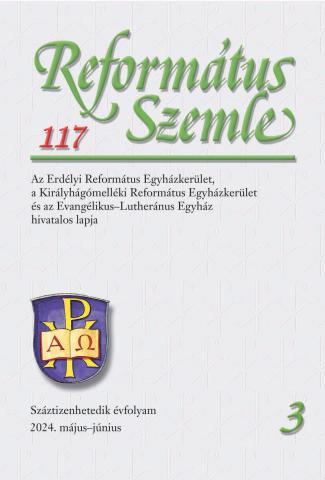
Kovács Sándor › 2024 › Oldal: 315--324Közlemény › Egyéb › tanévzáró ünnepély, tanévzárás, rektori beszéd
